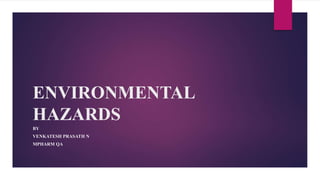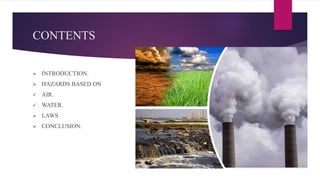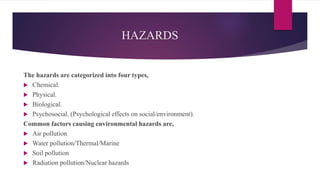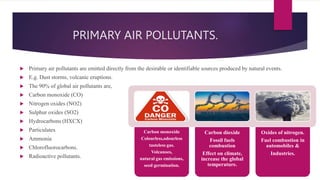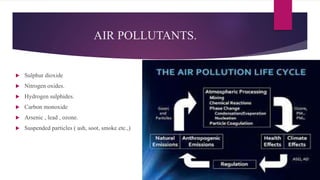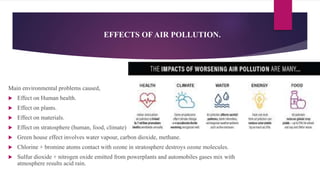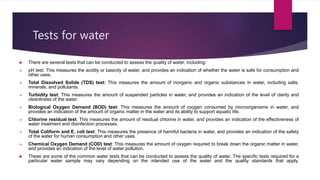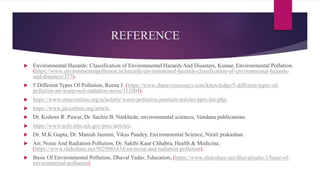This document summarizes various environmental hazards and laws related to air and water pollution. It discusses the different types of air pollutants including primary and secondary pollutants. Major causes of air pollution are outlined such as industrial emissions, vehicular exhaust and agricultural burning. Effects of air pollution on human health, plants and materials are also mentioned. Common water pollutants and causes such as industrial, domestic and agricultural waste are summarized. Key environmental laws in India including the Environment Protection Act, Air and Water Pollution Control Acts are briefly described.
